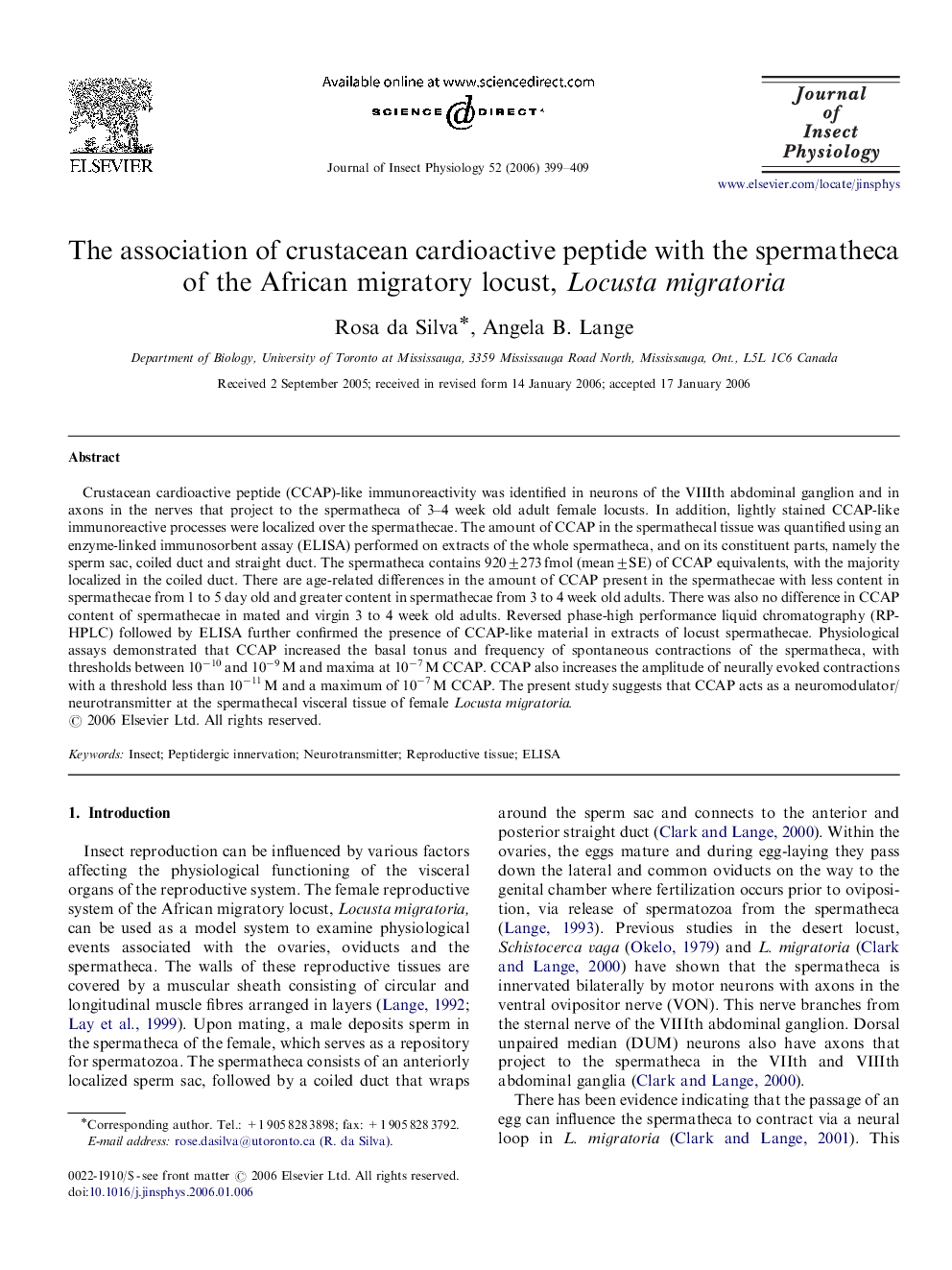| Article ID | Journal | Published Year | Pages | File Type |
|---|---|---|---|---|
| 2841634 | Journal of Insect Physiology | 2006 | 11 Pages |
Crustacean cardioactive peptide (CCAP)-like immunoreactivity was identified in neurons of the VIIIth abdominal ganglion and in axons in the nerves that project to the spermatheca of 3–4 week old adult female locusts. In addition, lightly stained CCAP-like immunoreactive processes were localized over the spermathecae. The amount of CCAP in the spermathecal tissue was quantified using an enzyme-linked immunosorbent assay (ELISA) performed on extracts of the whole spermatheca, and on its constituent parts, namely the sperm sac, coiled duct and straight duct. The spermatheca contains 920±273 fmol (mean±SE) of CCAP equivalents, with the majority localized in the coiled duct. There are age-related differences in the amount of CCAP present in the spermathecae with less content in spermathecae from 1 to 5 day old and greater content in spermathecae from 3 to 4 week old adults. There was also no difference in CCAP content of spermathecae in mated and virgin 3 to 4 week old adults. Reversed phase-high performance liquid chromatography (RP-HPLC) followed by ELISA further confirmed the presence of CCAP-like material in extracts of locust spermathecae. Physiological assays demonstrated that CCAP increased the basal tonus and frequency of spontaneous contractions of the spermatheca, with thresholds between 10−10 and 10−9 M and maxima at 10−7 M CCAP. CCAP also increases the amplitude of neurally evoked contractions with a threshold less than 10−11 M and a maximum of 10−7 M CCAP. The present study suggests that CCAP acts as a neuromodulator/neurotransmitter at the spermathecal visceral tissue of female Locusta migratoria.
